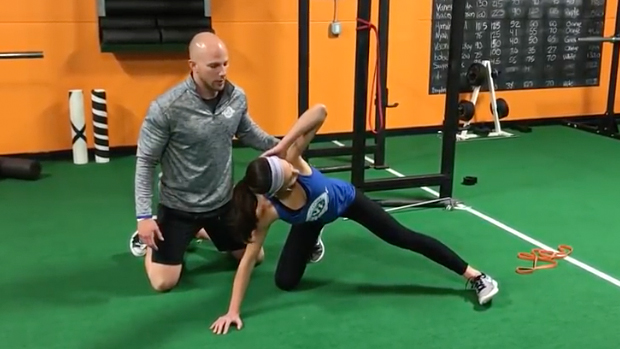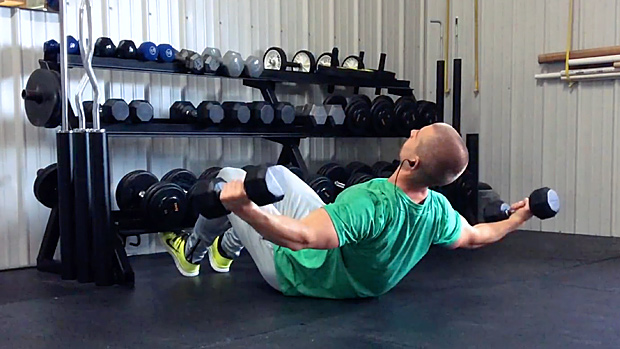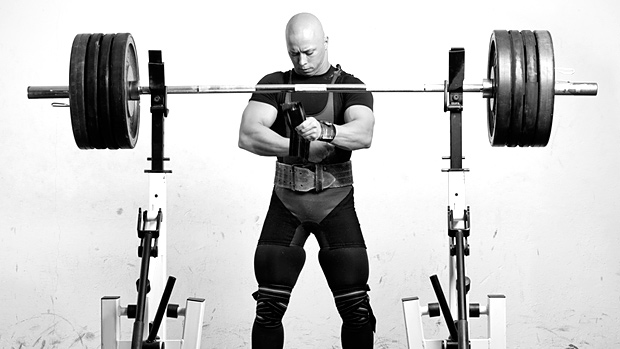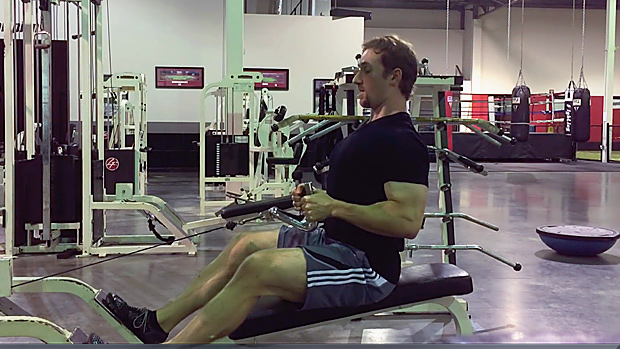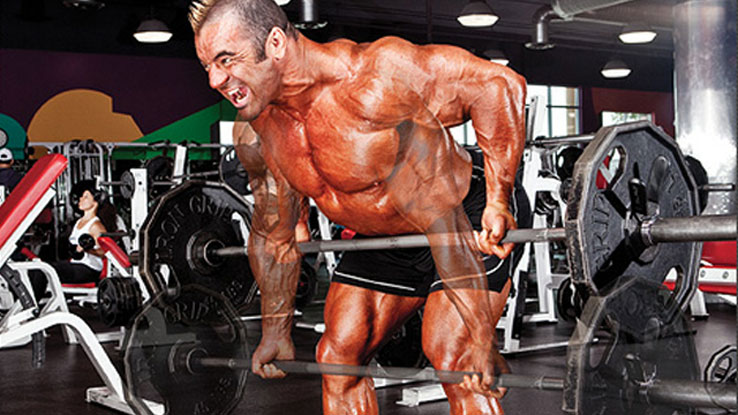The Problem and the Solution
Most people have lost the ability to stabilize their pelvis and lumbar spine. This is a problem since the lower portion of the spine is anatomically designed to be stable; it functions best under low amounts of relative movement.
Creating super-stiffness at the pillar is nonnegotiable if you're a lifter. It starts with positioning the pelvis and lumbar spine together synergistically. But achieving a position is vastly different than maintaining a position, especially when there's a heavy barbell on your back.
That's where this movement comes in. It'll help you brace your core by creating tension in a controlled environment. You'll relearn what stability should actually feel like.
Single-Leg Adductor Rock Back with T-Spine Rotation
How To Do It
- Drop down on all fours with your joints stacked (shoulders above elbows above wrists).
- Extend one leg out to the side with a straight knee in line with your hip.
- Grip the ground and co-contract your pecs and lats together.
- Stabilize the pelvis by co-contracting the glutes and adductors together.
- Tense the abs and core while maintaining the tension and torque at both the shoulders and hips.
- Slowly rock your hips back while maintaining a neutral spine, placing a stretch through the adductor that's extended.
- Move deliberately back and forth slowly in a controlled non-compensated range of motion.
- Complete 10-15 slow reps before sitting back and holding the end range actively. Maintain tension throughout.
- Place your hand on your head (side of the extended leg) and rotate slowly up through the shoulder and thoracic spine.
- Complete another 10-15 slow reps here, exhaling at the top of each rep fully.
When To Do It
Use this drill in any warm-up before squats or deadlifts, which require the pillar to be active to create stability before getting into the big lifts for the day. Don't have a warm-up? Add it to the third phase when you do my Perfect 6-Minute Warm-Up.
The execution quality needs to be the focus here to yield positive results. This one will be a challenge to do smoothly. When in doubt, make sure your spine and pelvis remain in neutral with active tension created around them.

